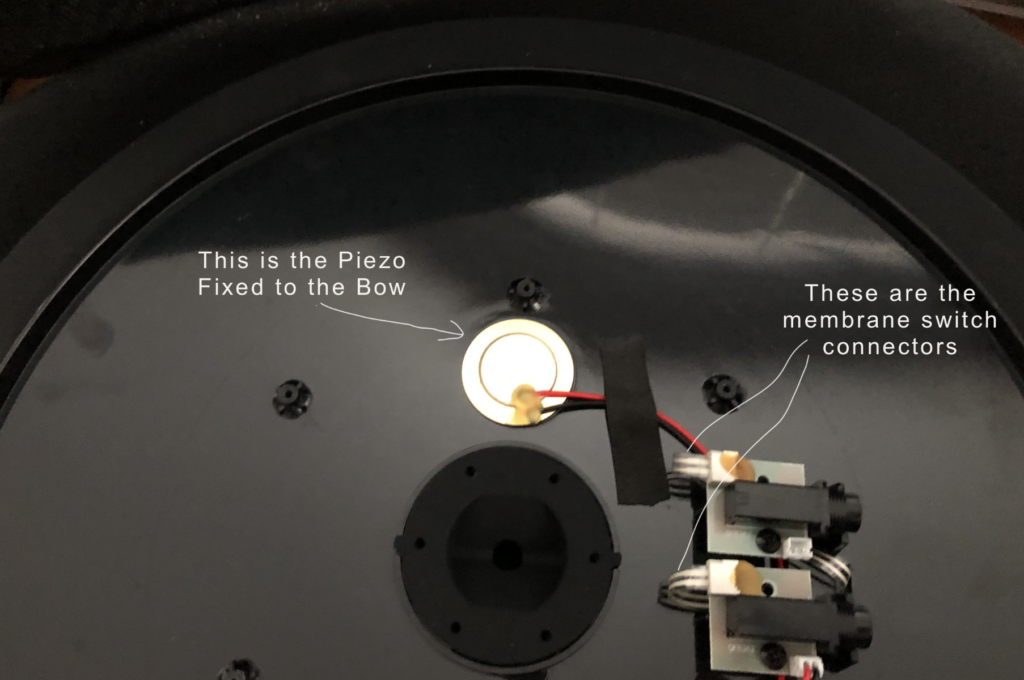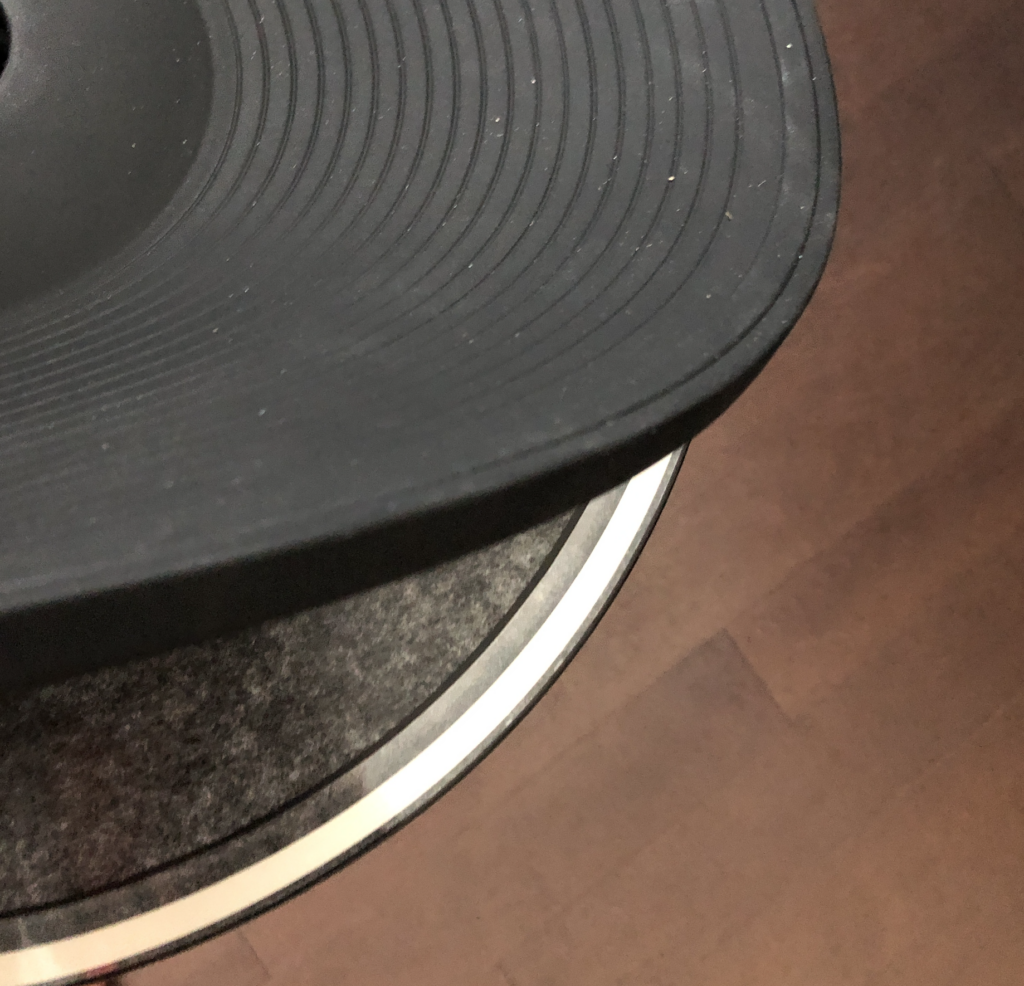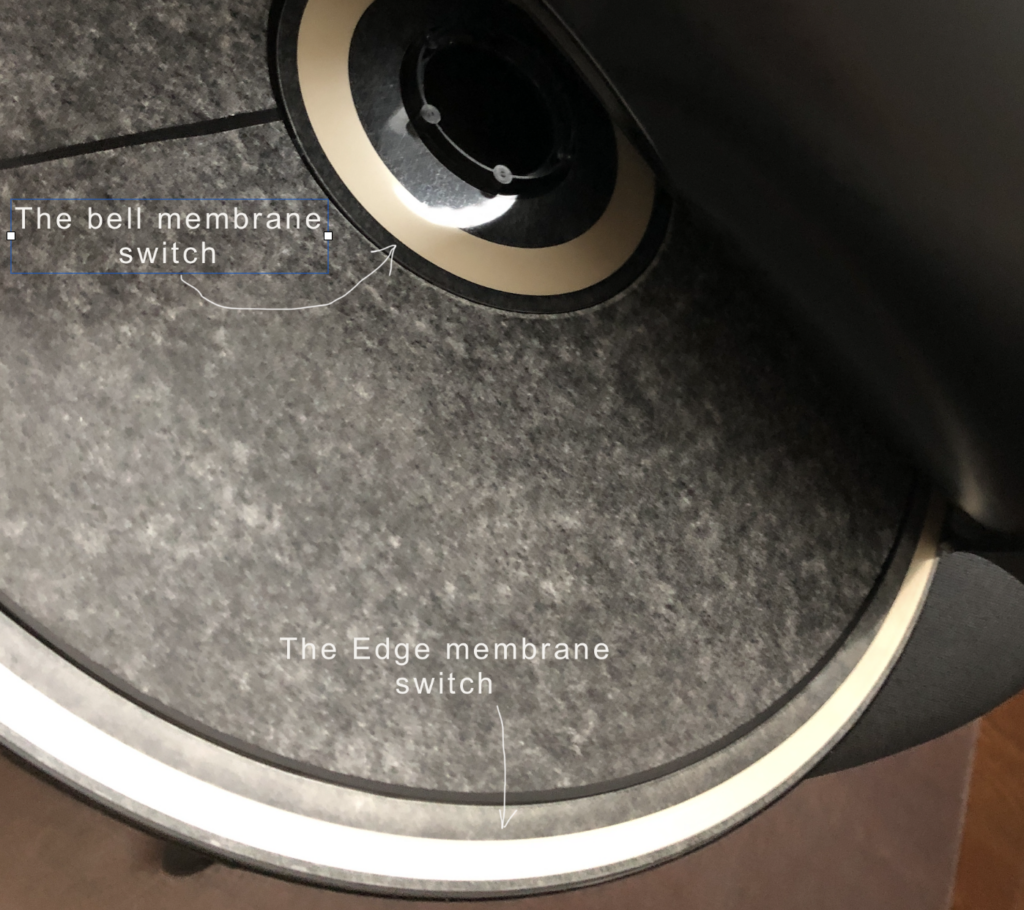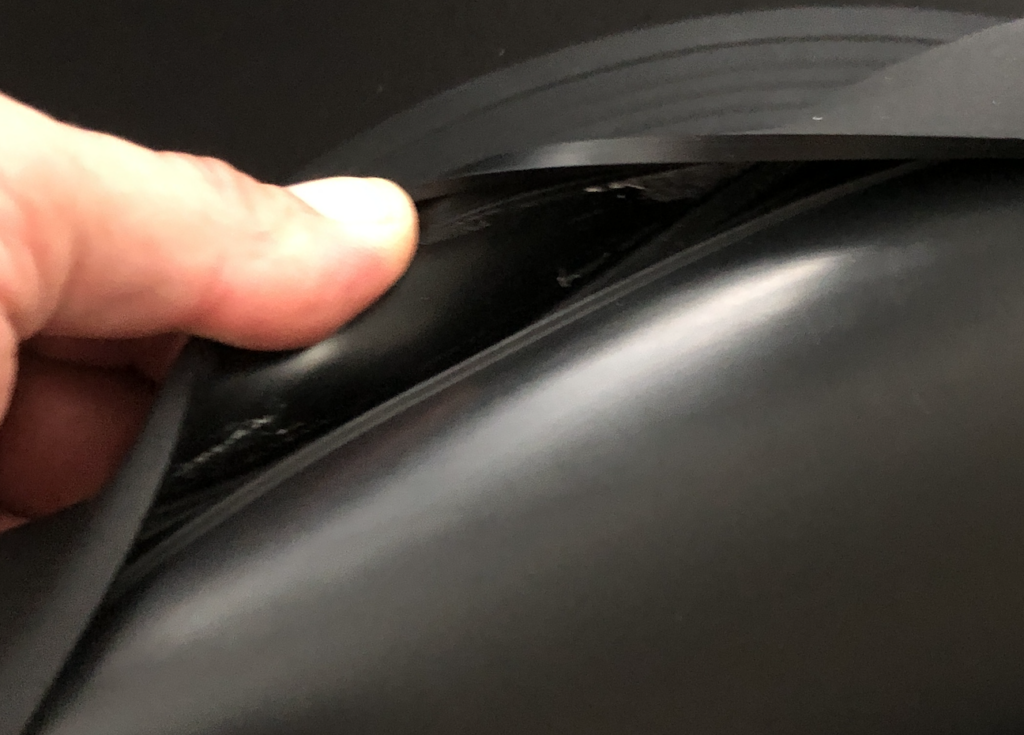We continue our exploration of drum triggers with Cymbals. Cymbals are a little more complicated than pads in that we find more variety in their wiring as well as in their functions. Here too, we will see that some cymbals have multiple zones, generally separating the cymbal in 3 distinct zones that is: Bow, Edge and Bell. Crash only cymbals will only have sensors on Bow and Edge while ride cymbals will add the 3rd Bell zone.
Unlike toms, cymbals almost universally use membrane switches for detecting hits on the Edge and Bell zones. The Bow generally hosts a Piezo Pickup, similar to the one found in pads. That single Piezo is used to sense the velocity of all hits, including those on the Edge and Bell, the switches simply tells the drum module that those hits occured on the Edge or Bell. Any hit that does not close the Edge or Bell switch is assumed to have hit the cymbal on the Bow section. Simple, but a little complex to build for DIY EDrummers.

E-Cymbals
They come in many shapes and sizes. From the old pie slice cymbals that are pretty much gone now to full size rubberized ones. They vary a lot in build quality and zones. The cheapest are simple acrylic disks with a small section of rubber to hit on and only have a single zone (just a piezo, no switch). The more expensive are rubberized, have multiple zones and are manufactured by the usual suspects, Roland, Yamaha etc.
At its core, passive cymbals are quite simple. They are basically a simple disk on which is at least fitted a Piezo element. The Edge and Bell sensors are membrane switches as shown below.

The Piezo
This is the insides of a 3 zone ride cymbal. This is typical of most cymbals, they are all build pretty much the same. The difference is mainly how they are wired with Yamaha cymbals being the outliers here again. As you can see, it's the same Piezo type used on the pads, just fixed with a sticky dot to the bow area. Mounting details are explored in more details in the DIY Piezo article.

The outer shell
The outer shell is simply a rubber cover. This cover creates a better, more silent playing surface. It covers the hard acrylic/ABS center. When removed, we can see the ABS cymbal core in this case.

The Switches
Here we can see the membrane switches that detect when the Bell and the Edge are hit. Membrane switches are simple two ply plastic membranes with two conductive layers facing each other in the middle. A thin separator keeps them from touching in the normal position. But as soon as you put pressure on them, the two facing conductive layers touch making contact, thus closing the circuit/switch.

The Cover Details
The cover both protects the delicate switches but also provides the other mechanical part of the membrane switch. The cover has a slight protruding part that is centered on the switch, making positive contact with the pressure sensitive part of the switch when you hit the Edge or Bow.
Different modules use different wirings. The most common is to use one cable for Bow and Edge and another cable for Bell. This is basically the Roland configuration, most cymbals are wired this way. Yamaha, being the outlier it is, uses only one cable for the 3 zones. The switches are actually wired as a voltage divider creating a different resistance value for each Edge and Bell. This has the advantage of using only one cable but only works on Yamaha and modules that support the Yamaha configuration.
Hi-Hats are often just a simple 2 zone cymbal coupled to a Hi-Hat controller. The Hi-Hat controller can either be just a pedal or a sensor fitted to a real Hi-Hat stand. The higher end Hi-Hats are of the later design. Naturally, Yamaha is an outlier here again with their Hi-Hat stand mounted being a special cymbal with the Hi-Hat controller built into the cymbal itself. Hi-Hat controllers are resistive devices that vary in resistance as the Hi-Hat pedal is moved up and down. Different sensors are used in those. We will dedicate an article to those controllers and how they are made.

It's Just A Piezo
You can pretty much buy all you need to convert any hard disk like surface to a cymbal. In this case, a low volume cymbal is a great substrate to create such a cymbal. You can convert them yourself or buy them already made by a few companies (small companies come an go, Pintech makes them as of this writing). Note here that there is a Piezo on the bell. Using a Piezo on the bell requires quite complex drum module set-up unless you can use a Piezo-Piezo channel. Typically, this is quite complicated on mainstream modules from Roland and forget it for Yamaha module unless you want to use a tom / aux input or something like that. These low volume cymbals make great single zone crash or dual zone crash cymbals though. As seen in the picture, this one has a membrane switch under the vibration dampening contour.
Naturally, you will find other type of cymbal sensors, you can even fit a piezo to a cymbal stand and get a signal from it. However, in my experience, purpose built rubber cymbals work best with the modules they are made for. They are less noisy and mostly more reliable than home made ones.